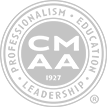The First Golf Course in the United States

When we think of historic golf courses, we tend to gravitate more towards the ones with a lot of media pop. For example, if you were to think of classic links in the United States, you probably imagine Amen Corner in Augusta, or perhaps Pinehurst in North Carolina. These are established iconic American golf courses, to be sure, but they are not the oldest.
What is the Oldest Golf Course in America?
It’s a quest to unearth the very roots of a sport now deeply ingrained in the nation’s recreational and competitive landscape. Was it a formally organized club with meticulously manicured greens, or a more informal gathering of Scottish immigrants recreating a familiar pastime on whatever land was available?
Early accounts can be fragmented, anecdotal, and sometimes colored by local pride. Distinguishing between casual games played by individuals and the establishment of organized golf clubs with dedicated courses further complicates the matter.
As we will explore, the answer isn’t always clear-cut. Different criteria—the earliest documented play, the oldest continuously operating club, the first purpose-built course—can lead to different conclusions.
Let’s explore what Keiser College of Golf believes is the oldest course in America.
Golf Course vs. Golf Club
A golf course is the physical land on which the game of golf is played, comprising a series of holes, each with a teeing ground, fairway, rough, and putting green. It’s the layout itself, designed with natural and artificial features to challenge golfers.
A golf club, on the other hand, is an organization or association of people who play golf. While a club often has a golf course associated with it, the club is fundamentally a social entity. Golf clubs can range from small groups of friends to large, formally structured organizations with clubhouses, staff, and various amenities.
In essence, the golf course is the where, while the golf club is the who. A golf club may own or be associated with one or more golf courses, but the course is the ground, and the club is the group of people who gather to play the sport.
American Golf Courses
The Beginning
Back in 1884, golf was not really heard of in the United States. Anyone who witnessed it or knew of it in other countries considered it a strange sport. When Russell Montague of West Virginia learned of the sport that was so popular in Scotland and where he studied in Great Britain, he was intrigued. With the help of some local friends and neighbors, he built the first golf course in the United States on his Sulphur Springs property.
Golf’s Oldest Prize
His colonial-style house, which was built four years prior to the golf course, served as the clubhouse, and the simple course boasted nine holes. Montague and his friends enjoyed playing on the course, known as Oakhurst Links, for many years. Montague hosted its first competition in 1888 in Scottish match play tradition. Their annual competition became the first golf tournament known to be played in the United States, and the medal given to the winner was known as the oldest golf prize in America.
Back and Forth
In 1912, Oakhurst Links was reverted back into a pasture after Montague moved to Virginia, and other friends who used the course moved away. The thirty acres stayed in the Montague family for many decades and was sold to Lewis Keller in 1959. Keller knew the land’s history and, being a golf fan, was very interested when his friend and golfer Sam Snead told him about the property being for sale. Keller lived in New York but would come to play golf with Snead in West Virginia frequently. After seeing the property, he knew he had to make the purchase.
Keller used the land as a summer home and horse farm until the early 1990’s when he made the move to return the land to the Oakhurst Links golf course. With the help of a golf course architect, Keller brought the golf course back to its original state. Using Montague’s family documents, they were able to locate the original tees, greens, and the course’s routing. The course was exactly as Russell Montague and his friends played it in 1884. Building the course back to its original state took two years, but Keller was extremely pleased with the end result.
Keller owned and operated the course for many years until he recently sold it to Greenbrier Resort, which is located just a few miles up the road. The course, museum, and clubhouse are listed with the National Register of Historic Places.
Keeping It Old School
Anyone who visits this historic golf course today knows that modern golf conveniences are not allowed. Some visitors even wear period clothing, and all golfers are required to use reproductions of the clubs and balls used in 1884 when the course was first built.
First American Golf Course
If you are interested in more details of Oakhurst, you can read about the links in Paula DiPerna’s and Vikki Keller’s book Oakhurst: The Birth and Rebirth of America’s First Golf Course available on Amazon.com.
Other Contenders for The First Golf Course in the United States
Determining the absolute “first” golf course in the United States is tricky, as early golf was often informal, and records are incomplete. However, here’s a look at some of the earliest and most historically significant contenders:
- Newport Country Club (Newport, Rhode Island): Founded in 1893 by Theodore Havemeyer after a visit to France, where he played golf. Newport Country Club holds the distinction of hosting both the first U.S. Amateur Championship and the first US Open in 1895.
- Harleston Green (Charleston, South Carolina): Some golf historians suggest that the first organized golf in America might have been played here in the late 1700s.
- Savannah Golf Club (Savannah, Georgia): Records of the Savannah Golf Club date back to the 1790s, making it a very early contender.
- Dorset Field Club (Dorset, Vermont): Founded in 1886, this club claims continuous golf play since that time.
- Foxburg Country Club (Foxburg, Pennsylvania): Established in 1887, it is considered the oldest course in continuous use in its original layout.
Other Historically Significant Golf Courses
Beyond the debate of the “first,” numerous other golf courses in the United States hold significant historical importance. Many courses across the United States represent key milestones in the sport’s development, architectural innovation, and cultural impact.
- The Saint Andrew’s Golf Club (Yonkers, New York): Started in 1888 by John Reid and friends, it’s the oldest golf club in continuous existence in the U.S.
- The Country Club (Brookline, Massachusetts): The oldest country club in the U.S., it was founded in 1882 and is one of the five charter clubs of the USGA.
- Shinnecock Hills Golf Club (Southampton, New York): Founded in 1891, it boasts the oldest extant 18-hole course and clubhouse.
- Chicago Golf Club (Wheaton, Illinois): The first 18-hole course in North America. The original Chicago Golf Club was located in Downers Grove, Illinois and is now the Belmont Golf Club. The original course was a 9 hole and was moved, redesigned and renamed to be a 18 hole course.
Learn more!
Want more tips? If you want to take your game to the next level, contact our team at Keiser University’s College of Golf & Sport Management today. With our dedication and experience, we can elevate your game to new heights together. Give us a call today at 888-355-4465.















Is there any relationship between Lewis Keller and Lewisburg WV?
I always thought
First public golf course
Van Cortlandt pk Bronx ny
First private course
St. Andrews yonkers ny
The oldest/first golf course was not Oakhurst Links, but rather Harleston Green which was established in the late 1700s in Savannah, GA. I recently did a podcast called “The Birth And Death of Golf in America” on the very subject.
Charleston Green was in Charleston, SC, not Savannah. It was located in a small area between Calhoun & Beaufain and Rutledge & Barre Streets. It was the first golf course in the US.
Fancy that.Watch golf ⛳ with new eyes
I believe the oldest golf course West of the appalations is the old course at Maryville college in Maryville, Tennessee. Established by Scott from the wataugan era in early 1700’s. Now part of the college there.
Where does The Powelton Club in Newburgh, New York 12550 fall into this discussion — established 1882.